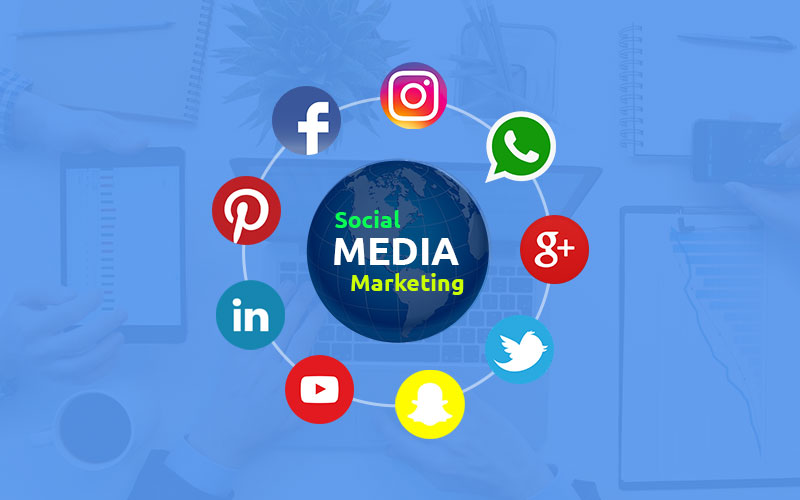Social media platforms like Instagram and Facebook have long evolved beyond being just spaces for people to connect and share photos and videos. In 2024, social media has become an indispensable tool for implementing business ideas and engaging with target audiences. These platforms have provided businesses with the opportunity to generate millions in revenue by selling products or services directly through well-known social networks.
It’s hard to imagine that a globally recognised company, such as Apple or Coca-Cola, wouldn’t have a presence on Facebook, Instagram, or X (formerly Twitter). These global brands effectively leverage social media not only to showcase and sell their products but also as a straightforward communication tool for engaging with their target audience and receiving feedback.
Here are the main reasons why any business should have an official presence on popular social media platforms:
- Increased Brand Awareness
- An Additional Sales Channel for Your Products or Services
- A Simple Way to Showcase Your Product Range
- Easy Communication with Potential Clients via Comments or Messages
- Access to Additional Internal Tools, Such as Advertising
What is SMM and an SMM Strategy?
Social Media Marketing (SMM) is the use of marketing tools within social media platforms to attract your business’s target audience. While it’s possible to start working with social networks simply by creating a free business account, achieving significant results and fully utilising this advertising tool requires time and effort.
In today’s world, gaining clients isn’t as simple as creating an account and posting once. You need to define your target audience and understand exactly what they want to see on your profile. It’s also crucial to consider what advantages you hold over competitors and what unique value your business offers.
All of this needs to be addressed at the initial stage when developing your SMM strategy. An SMM strategy is an essential foundation for your future project. Without identifying your target audience, understanding your product’s value, and creating a step-by-step strategy, success in social media is unlikely.
Here’s what should be analysed and developed as part of your SMM strategy:
- Your Target Audience
- Your Business Goals
- Your Company’s Tone of Voice
- Your Core Values
- Your Brand Identity
- Technical Aspects, such as Post Frequency and Content Creation Logic
- Let’s take a closer look at each of these points:
Defining Your Target Audience on Social Media
This should be the first step. Think about who buys your products or services, create a customer profile, and consider which social networks most of these people use.
Here’s how it’s done:
If you sell mid-range products that stand out for their design, Instagram might be the best platform for you. The Instagram audience enjoys visual content, so your target audience is likely there.
If you sell specialised equipment where technical specifications are crucial, Facebook may be more suitable, as its audience often prefers text-based content.
If your product sales are linked to video presentations, why not use the most relevant platform for that—YouTube!
If you offer B2B services, LinkedIn’s functionality might be worth exploring in more detail.
Of course, this example is quite broad, but it provides an idea of the logic you should follow when beginning your social media journey.
Your Business Goals on Social Media
After identifying your target audience, it’s time to consider what business objectives you want to achieve through social media. Do you want to increase sales through social networks? Drive more traffic to your website through referral traffic from social media? Or maybe you view social media as a tool for increasing your brand’s online visibility? And finally, perhaps you need all of these?
Once you’ve answered these questions, you can move on to the next step.
Tone of Voice on Social Media
Now that we know our objectives and target audience, it’s time to think about how we’ll communicate with our potential clients. The tone of voice is about how your company interacts with its audience online. Will you use a formal or friendly style? How appropriate is it to start a conversation with “Hi mate!”?
If your audience consists of younger and middle-aged people, a friendly tone may be suitable. However, if you sell B2B products or services, a professional tone may be more appropriate to avoid misunderstandings.
Company Values on Sotial Media
Next, it’s time to define your company’s values. What customer problem can you solve? Why should a client choose you over hundreds or thousands of competitors? What distinguishes your company from others?
By clearly defining your company’s values, you’ll have a better understanding of what to focus on when creating future content.
Brand Identity on Social Media
If you already have a website or some online presence, it’s likely you already have an established brand identity in some form. However, if you’re starting your business online with social media, you might need to invest more time in developing your brand identity.
Consider what corporate colours, fonts, and logos you want to use. Conduct A/B testing to determine the style you’ll stick to when designing your social media posts in the future.
Content Frequency and Type on Social Media
It’s now time to move on to the final preparatory step-determining the type of content you’ll post and how often.
Let’s start by understanding the types of content that exist on social media:
- Informative Content
- Sales Content
- Engagement Content
- Viral Content
The specifics of each type of content have been discussed in a previous article. We recommend checking it out, as it’s both interesting and useful.
The sequence and frequency of new content postings depend on various factors, such as the type of social network, your business’s specifics, and, of course, the amount of content you have available.
Here are some tips to make your social media work more transparent and structured:
- Create a content calendar and plan your posts at least two weeks in advance. This will help you avoid spontaneity, reduce the risk of missed posts, and keep everything under control.
- Don’t overdo it. No matter how well-intentioned you are, it’s unlikely your audience will appreciate dozens of posts and stories daily. In fact, it might irritate even your most loyal followers.
- Maintain your brand identity in all your posts.
Ordering SMM Services from Top Results Agency: Quality, Reliability, and Creativity
If you need a high-quality SMM strategy that considers all aspects of your business and aligns with your target audience’s expectations, you’re in the right place!
We provide SMM services across the UK, helping dozens of businesses maximise their use of Facebook, Instagram, YouTube, LinkedIn, and more.
If you want to be the next business to boost your profits through social media, call us now for a free consultation. We’ll discuss your project and work with you to outline the next steps to make your project truly successful!





